memzey
Established Member
Hi everyone,
Please let me start by saying a couple of things - firstly I'm an amateur woodworker looking to develop his skills. I am not a collector by any means however I do have a preference for vintage tools. This is partially down to economics but also because I have found in my limited experience that old tools tend to be very well made and that most new "innovations" are a bit gimmicky as opposed to actually useful. Secondly I have never bothered to tend to the aesthetics of any of my tools. My MO is to sharpen, fettle when needed then use. That's it. I don't really want to waste too much time on looks (my wife sees evidence of this every time I get dressed ) or obsessing over flatness or whatever. I have recently had a tool come into my possession however that has made me reconsider this stance if only just for this particular piece:
) or obsessing over flatness or whatever. I have recently had a tool come into my possession however that has made me reconsider this stance if only just for this particular piece:
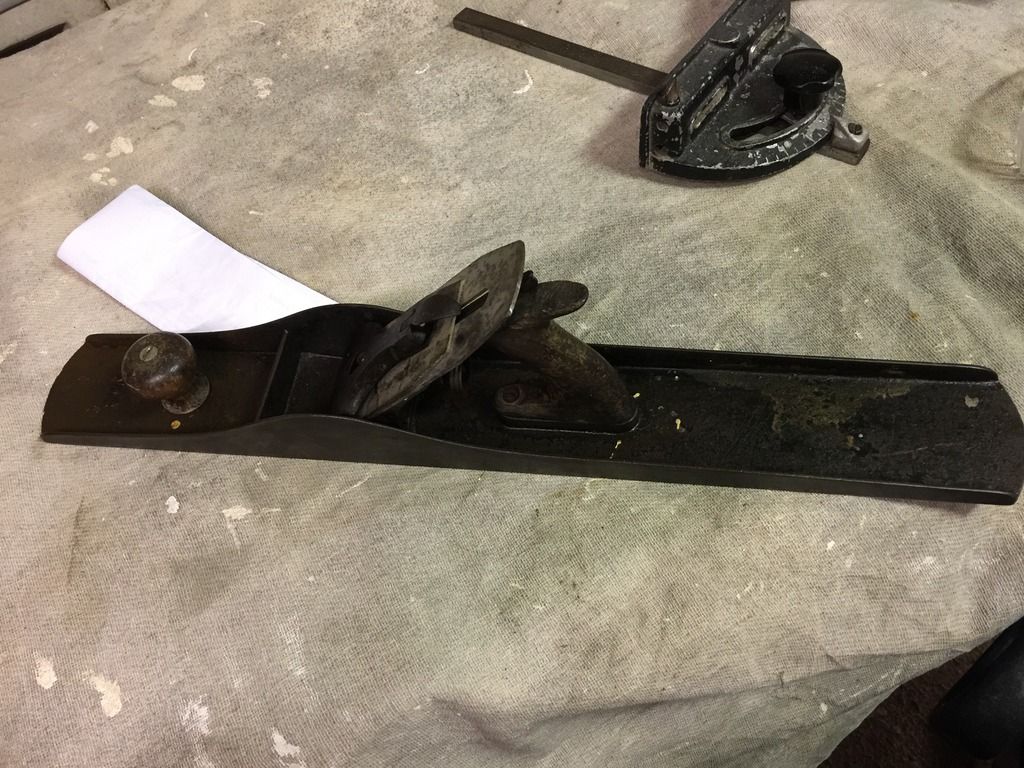
This enormous slab of rust is an early (possibly type 6) Stanley No. 8. It is of the vintage that I like as the frog is fixed and the machined mating areas between the casting and the frog are large. It has a low knob and tote that are both rosewood. Now this plane came to me very cheaply so it doesn't really owe me anything but before I could put it to use I had to address the rust on the top of the casting. The sole by comparison is remarkably sound. In so doing I discovered that almost all of the japaning had gone leaving little to protect the plane from another attack by the rust monster:
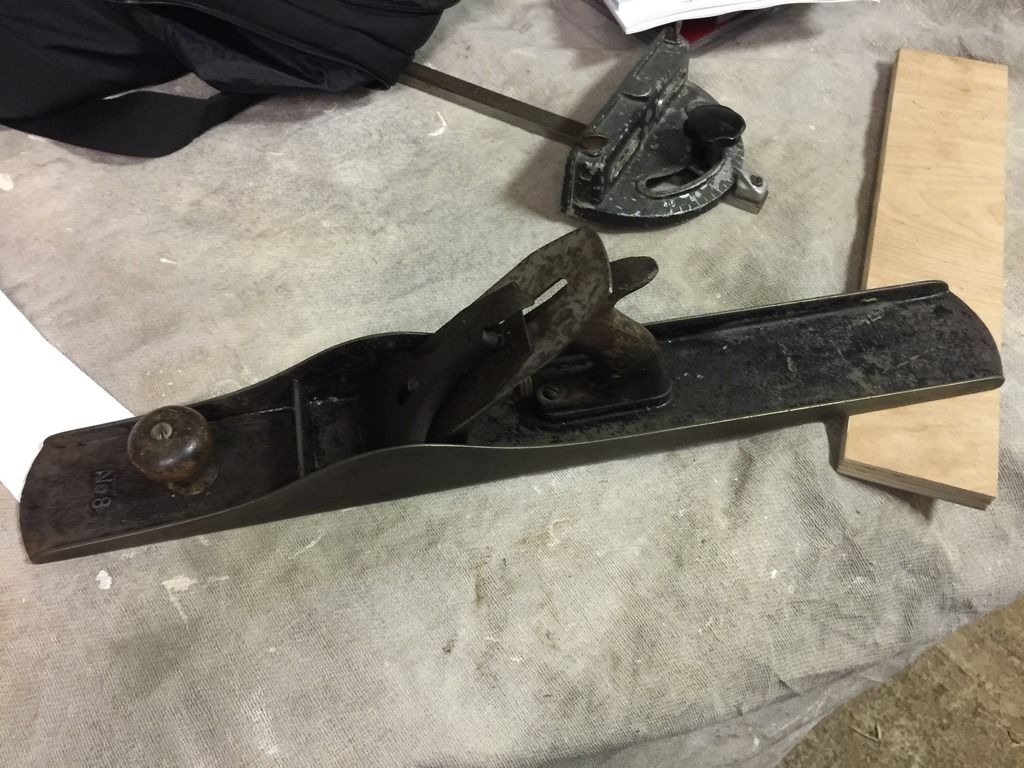
Here you can see what I mean:
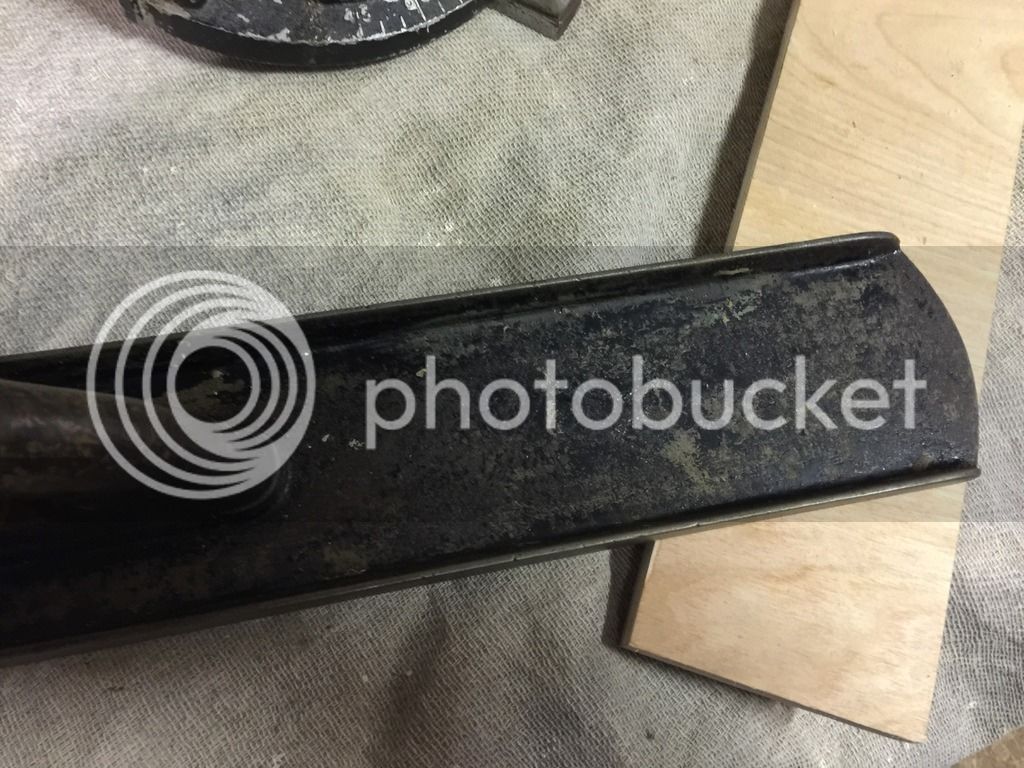
The lever cap and cap iron also need a lot of work:
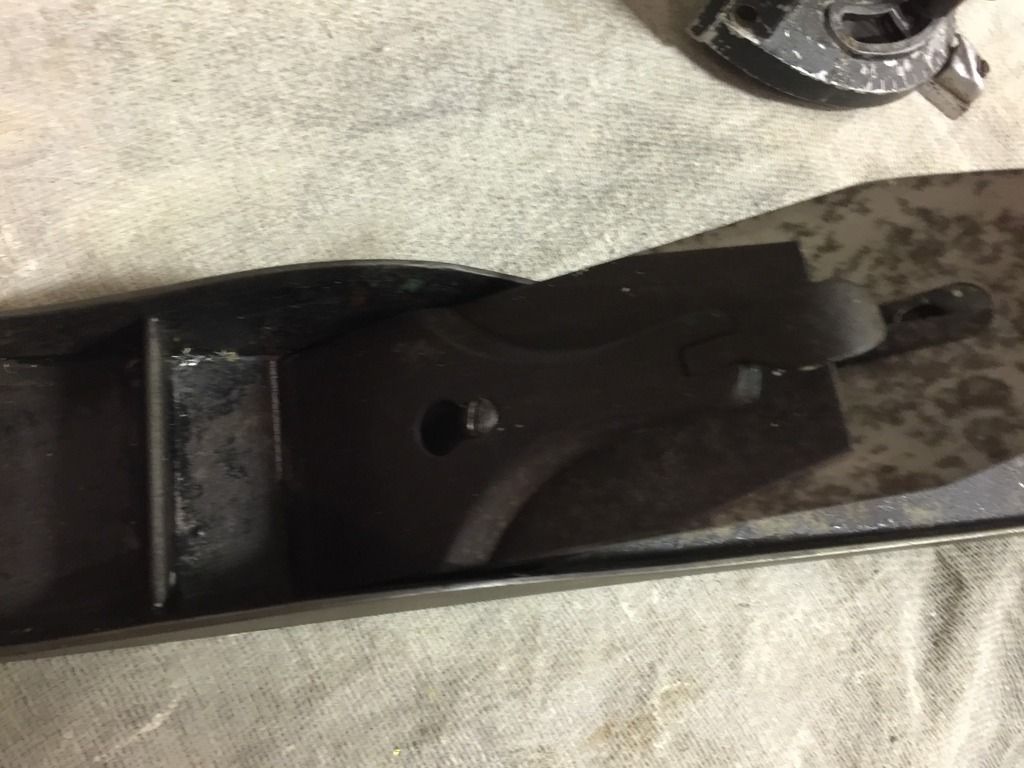
The toe of the plane is also in a bad way but the knob is not too bad:
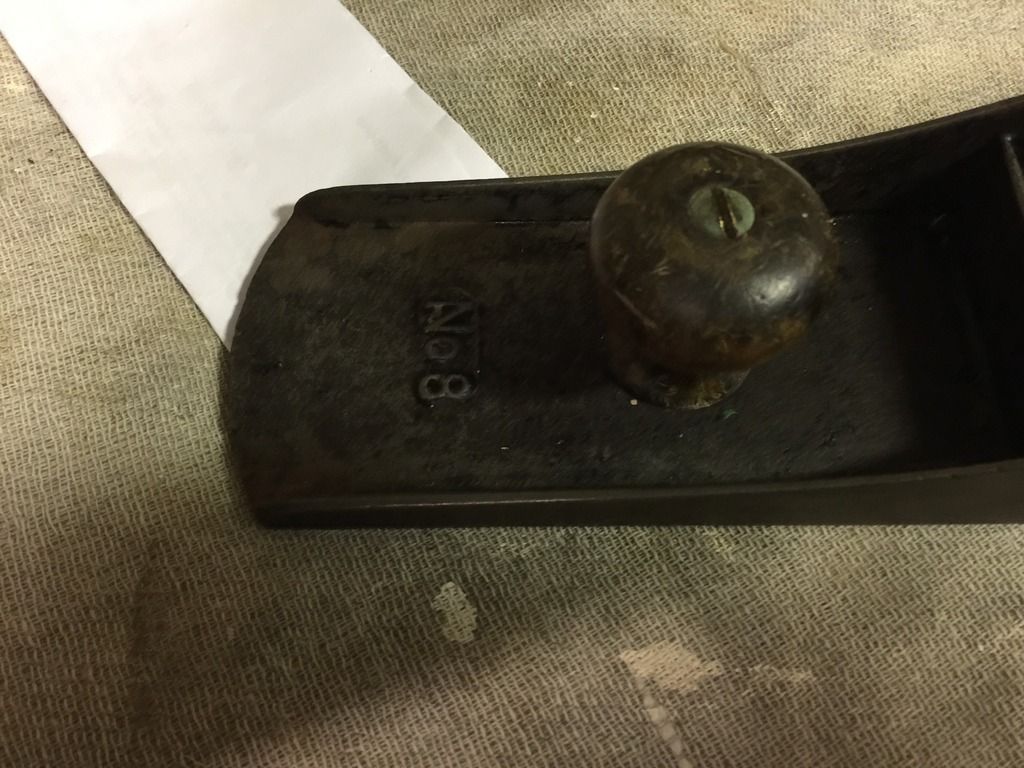
Now I have never taken paint or any other kind of finish to a tool before but I am currently giving serious consideration to completely stripping the remaining black from this plane and applying something like rustoleum to help protect it from more brown crusty stuff forming. I know this will deminish its historical value and that many people think doing so would be the wrong thing to do (I might get kicked out of TATHS for this) but from my perspective I don't think an old No. 8 that is falling to bits with rust has much inherent interest and at least by treating it in this way it will be kept usable to me and hopefully others in future. I have seen many others on this site bring old tools back to life and just wanted to see your thoughts were before taking that step.
Thanks for reading and sorry it was such a long post (memzey=windbag)!
Please let me start by saying a couple of things - firstly I'm an amateur woodworker looking to develop his skills. I am not a collector by any means however I do have a preference for vintage tools. This is partially down to economics but also because I have found in my limited experience that old tools tend to be very well made and that most new "innovations" are a bit gimmicky as opposed to actually useful. Secondly I have never bothered to tend to the aesthetics of any of my tools. My MO is to sharpen, fettle when needed then use. That's it. I don't really want to waste too much time on looks (my wife sees evidence of this every time I get dressed

This enormous slab of rust is an early (possibly type 6) Stanley No. 8. It is of the vintage that I like as the frog is fixed and the machined mating areas between the casting and the frog are large. It has a low knob and tote that are both rosewood. Now this plane came to me very cheaply so it doesn't really owe me anything but before I could put it to use I had to address the rust on the top of the casting. The sole by comparison is remarkably sound. In so doing I discovered that almost all of the japaning had gone leaving little to protect the plane from another attack by the rust monster:

Here you can see what I mean:

The lever cap and cap iron also need a lot of work:

The toe of the plane is also in a bad way but the knob is not too bad:

Now I have never taken paint or any other kind of finish to a tool before but I am currently giving serious consideration to completely stripping the remaining black from this plane and applying something like rustoleum to help protect it from more brown crusty stuff forming. I know this will deminish its historical value and that many people think doing so would be the wrong thing to do (I might get kicked out of TATHS for this) but from my perspective I don't think an old No. 8 that is falling to bits with rust has much inherent interest and at least by treating it in this way it will be kept usable to me and hopefully others in future. I have seen many others on this site bring old tools back to life and just wanted to see your thoughts were before taking that step.
Thanks for reading and sorry it was such a long post (memzey=windbag)!




